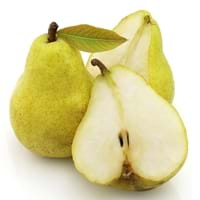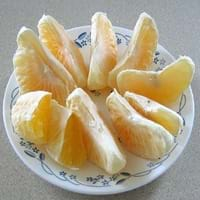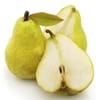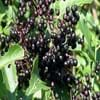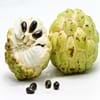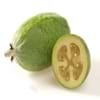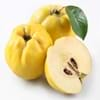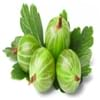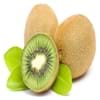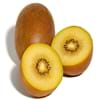Health Benefits
Arthritis prevention, Cancer prevention, Gout treatment, Heart care
Increases metabolic rate, Lower blood pressure, Protects against kidney stone formation
General Benefits
Anti-inflammatory properties, Boosts immune system, Controls blood pressure, Controls blood sugar levels, Cures fever, Digestive aid, Sore throat treatment
Gives you energy
Skin Benefits
Reduces wrinkles, Treatment of acne
Skin cleansing
Hair Benefits
Promotes longer and healthier hair, Shiny hair
NA
Allergy Symptoms
Anaphylaxis, Digestive Problems, Itching, Skin Rashes, Swelling
NA
Side Effects
Allergic reaction
Affects blood glucose levels, Decrease in blood sugar levels, Coagulation
Best Time to Eat
As a snack in the late afternoon, Don't consume at night and before bed, Eat the fresh ones, avoid mixing with any other foods, don't eat after meal., Morning time (before lunch)
As a snack in the late afternoon, Eat the fresh ones, avoid mixing with any other foods, don't eat after meal., Morning time (before lunch)
Vitamin A (Retinol)
Not Available
Vitamin B1 (Thiamin)
Not Available
Vitamin B2 (Riboflavin)
Not Available
Vitamin B3 (Niacin)
Not Available
Vitamin B5 (Pantothenic Acid)
Not Available
Vitamin B6 (Pyridoxin)
Not Available
Vitamin B9 (Folic acid)
Not Available
Vitamin C (Ascorbic Acid)
Vitamin E (Tocopherole)
Not Available
Vitamin K (Phyllochinone)
Not Available
Lutein+Zeaxanthin
Not Available
Phytosterol
Not Available
Water Content
Not Available
Calories in Fresh Fruit with Peel
Calories in Fresh Fruit without Peel
Not Available
Not Available
Calories in Frozen Form
Not Available
Not Available
Calories in Dried Form
Not Available
Not Available
Calories in Canned Form
Not Available
Not Available
Calories in Pie
Not Available
Season
Autumn, Summer, Winter
Dry
Varieties
Green Anjou, Red Anjou, Bartlett, Red Bartlett, Bosc, Comice, Concorde, Forelle, Seckel and Starkrimson
NA
Color
Yellow
Orange, Yellow
Inside Color
White
Creamy Yellow
Taste
Crunchy, Sweet
Sweet
Origin
China, Japan
Jamaica
Soil Type
Clayey, Loamy, Sandy
Loamy
Climatic Conditions
Cold, Hot, Without frosts
Warm
Facts about
- The first pear tree was planted in North America in 1620.
- The Chinese considered the pear fruit to be a symbol of immortality.
- This fruit was used as a natural remedy against nausea in ancient Greece.
- The name is derived from the word "ugly" refering to the it's unpleasant appearance, with rough, wrinkled, greenish-yellow rind, wrapped loosely around the orange pulpy citrus inside.
Top Producer
China
Jamaica
Other Countries
Argentina, Belgium, India, Italy, Japan, South Africa, Spain, Turkey, United States of America
NA, United States of America
Top Importer
Europe
Europe
Top Exporter
China
Jamaica
Botanical Name
Pyrus communis
Citrus reticulata × Citrus paradisi
Synonym
Not Available
Tangelo, citrus tangelo
Subkingdom
Tracheobionta
Tracheobionta
Division
Magnoliophyta
NA
Class
Magnoliopsida
Unknown
Species
P. communis
C. reticulata × paradisi
Generic Group
Rose
Citrus fruit
Difference Between Pear and Ugli fruit
We might think that Pear and Ugli fruit are similar with respect to nutritional value and health benefits. But the nutrient content of both fruits is different. Pear and Ugli fruit Facts such as their taste, shape, color, and size are also distinct. The difference between Pear and Ugli fruit is explained here.
The amount of calories in 100 gm of fresh Pear and Ugli fruit with peel is 57.00 kcal and 45.00 kcal and the amount of calories without peel is Not Available and Not Available respectively. Thus, Pear and Ugli fruit belong to Low Calorie Fruits and Low Calorie Fruits category.These fruits might or might not differ with respect to their scientific classification. The order of Pear and Ugli fruit is Rosales and Sapindales respectively. Pear belongs to Rosaceae family and Ugli fruit belongs to Rutaceae family. Pear belongs to Pyrus genus of P. communis species and Ugli fruit belongs to Citrus genus of C. reticulata × paradisi species. Beings plants, both fruits belong to Plantae Kingdom.
